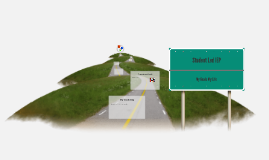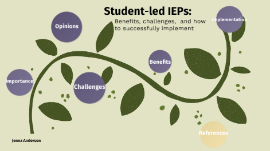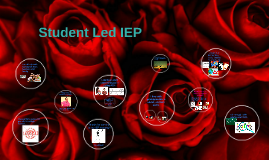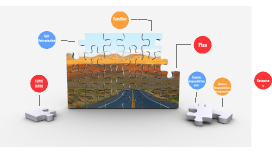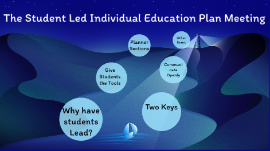Student-led IEP
Transcript: Student-led IEPs: Benefits, challenges, and how to successfully implement Jenna Anderson The What & Why Importance What is a student-led IEP "Student-led IEP meetings are a student-centered and student-directed practice that empowers students to participate in their IEP meetings as contributors, participants, and, most importantly, leaders" (Davis & Cummings, 2019) What Why is this important? When effectively implemented, student-led IEP meetings are widely considered to be beneficial at gaining self-advocacy and self-determination skills for students with disabilities. Self-advocacy and self-determination are two skill sets that appear to be associated with successful life outcomes (Wehmeyer & Palmer, 2003) Why Interviews & Opinions Opinions Middle school SPED teacher Middle School SPED teacher What is your opinion of a Student-led IEP? Student involvement in their IEP should only be through the proxy of their parents. Students (especially middle school) cannot take on the added burden of leading their own IEP Have you implemented/participated in a student-led IEP? No Other comments Also does not believe co-teaching is helpful; students with special needs should receive services exclusively from the special education teacher. Students should be aware and knowledgeable about their disability High school SPED Teacher High School SPED teacher What is your opinion of a Student-led IEP? True student led-IEPs are not practical; many students cannot regulate during the meetings and it is unfair and unethical to add the pressure of leading their own IEP Have you implemented/participated in a student-led IEP? Not true-student-led; in their program, they invite the students so the student can introduce themselves and others in the meeting and give input on how they are doing in their classes. But are not expected to take ownership of their meeting. Other comments Agrees that some student involvement will help prepare them for life after HS, but having a student take full-ownership and lead their own IEP meeting is not reasonable. Parent of 7th grader with IEP Parent of a middle school child with an IEP What is your opinion of a Student-led IEP? Likes the idea of a student-led IEP and would like to see a school structure that helps implement this appropriately; it could really benefit the students. Have you participated in a student-led IEP? No; has a poor relationship with the school and district in which she would not want to expose her son to this environment Other comments If the family and school had a better relationship, they would like to see their child be empowered to take ownership and leadership of his IEP High school student with IEP High school student with an IEP What is your opinion of a Student-led IEP? Enjoys being a part of his IEP meetings and goals; with good relationships with special education team, being a part of IEP process has been good at prepare student for life after school Have you implemented/participated in a student-led IEP? Wasn't aware of the term "Student-led IEP" but knew the concept and, in HS, has since participated more and more in plans. Was not as involved/aware of IEP prior to high school. Other comments Has built a really strong relationship with Special Ed teacher who has helped build skills to be involved and take ownership Challenges with student-led IEP meetings Challenges Time and resources: Proper implementation takes time Relationships and expectations: Special education teachers often bear the burden of responsibility in implementing Distrust between families & schools Imperfect implementation: Often times, teachers and families wan immediate results, which impairs effective practices to support students to lead their IEP meetings, plans, and follow up practices Benefits of student-led IEP Self-determination & self-advocacy Leadership & ownership skills Empowerment Problem solving skills Knowledge about their IEP, goals, education Increased sense of responsibility & pride Confidence in reaching goals Especially high school-aged students: Student led IEPs allow them to gain skills to support them into their post-school lives Benefits Implementation: To successfully implement a student-led IEP meeting only 1 additional planning step is required to the overall IEP planning process: Developing background knowledge Help the student develop the necessary background knowledge and a rational to facilitate their active and meaningful participation Implementation Ways to involve students in IEP Process: Develop an IEP scavenger hunt: allows the student to find certain information in their IEPs & become familiar with the IEP Read fictional books that have characters with disabilities; see how the character faces their disability Help students develop a vision statement for themselves Organizing the meeting plan: Have students write letters inviting meeting participants to attend Allow students to practice and prepare for the meeting (establish a safe space) Teach students to






